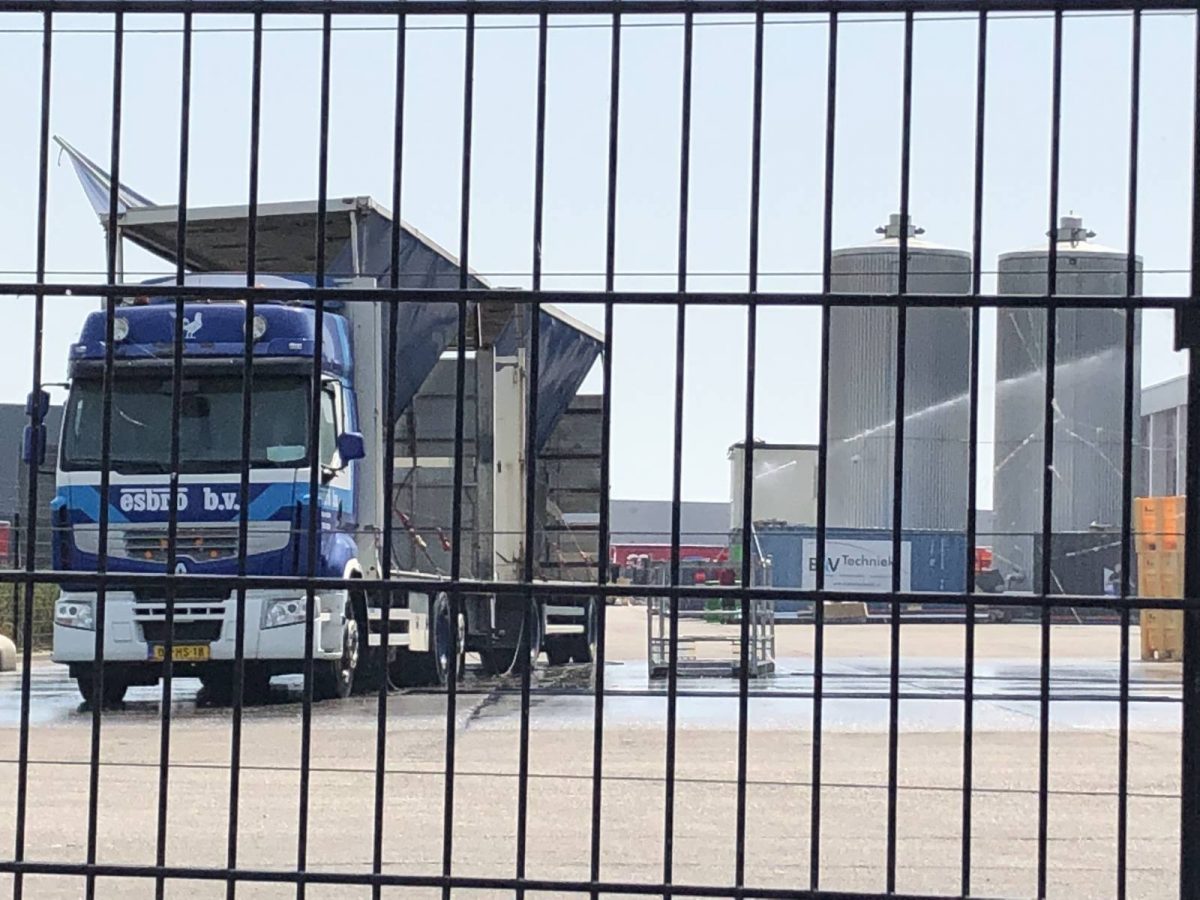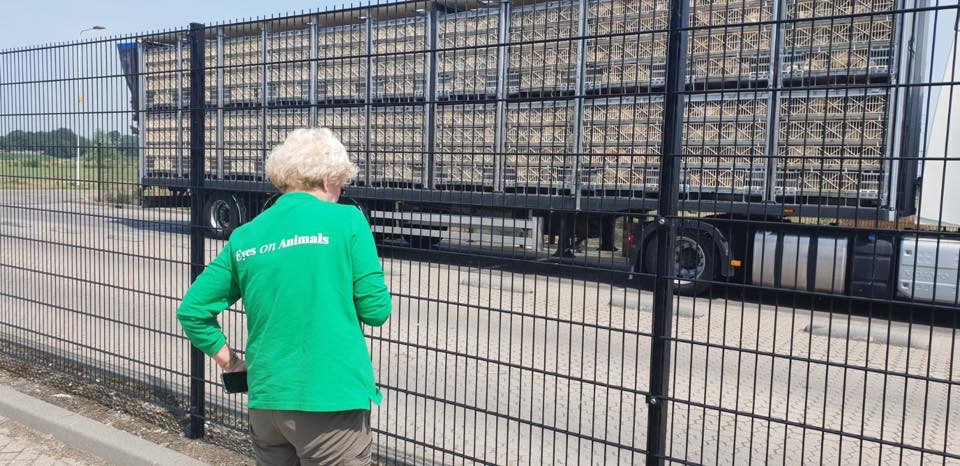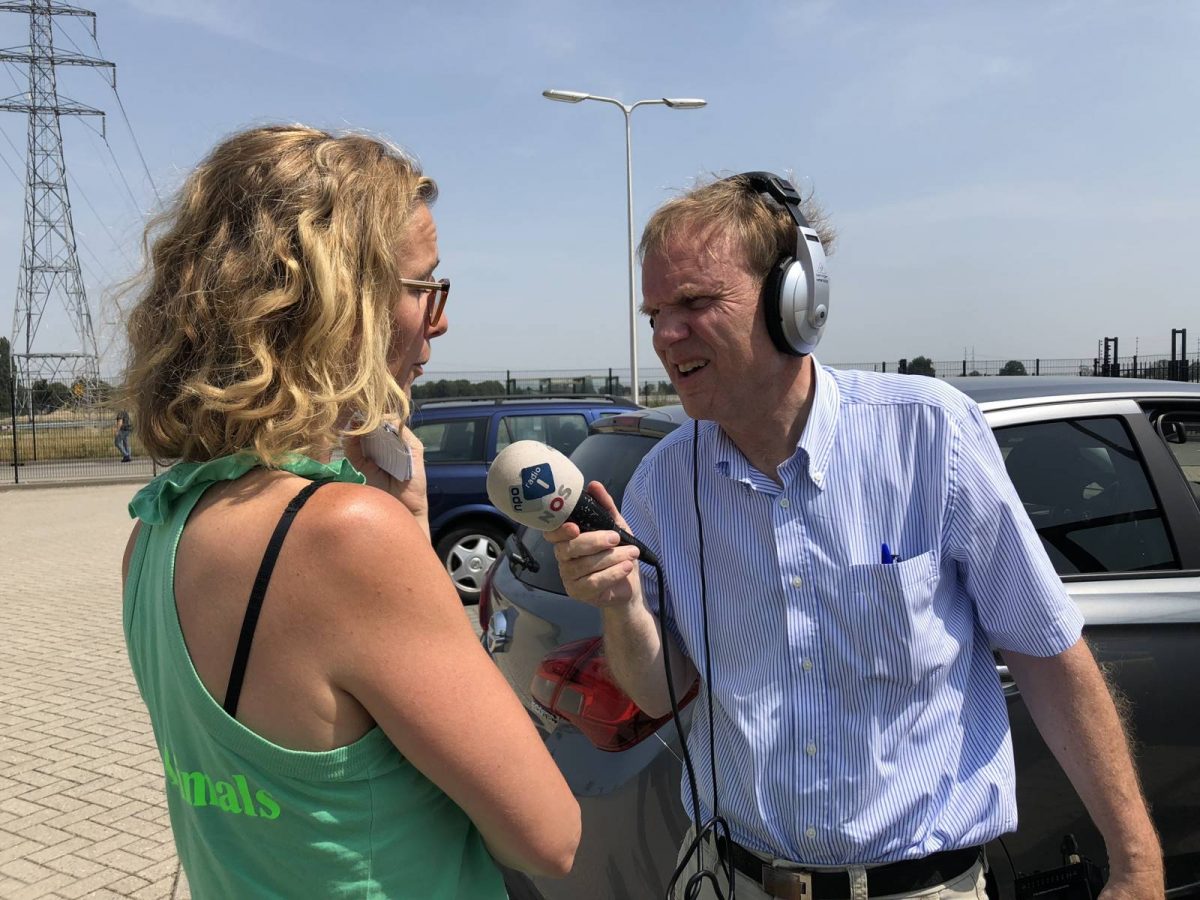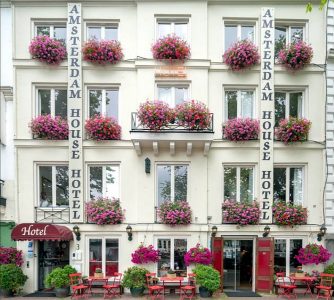Today we made an unannounced visit to the ESBRO slaughterhouse to take a closer look at how the heat protocol (from the poultry sector itself) is dealt with.
The poultry sector is not affiliated with the “Protocol Livestock transport at extreme temperatures” and therefore the supply can continue throughout the day.
At this slaughterhouse, slaughter continues for 18 hours per day; this would never fit within the national protocol. When we arrived at 1 pm, the outside temperature at the slaughterhouse was 40.6 degrees Celsius. Quite soon we saw a full transport wagon with broilers arriving. This arrival of livestock trucks continued as long as we were there. However, the cars were able to drive straight into the stable. In the event that this could not be done immediately, there was a converted truck outside with large fans on it, and the asphalt was kept wet.

A journalist from NPO Radio 1 joined us. He made a report about it that was broadcast on 25 July. You can listen to this HERE.
We spoke with the manager about the measures that the slaughterhouse had taken to deal with these high temperatures and we expressed our concern. Our opinion is that with these tropical temperatures no transport with live animals should take place. Or if necessary, only during the night. The manager understood our vision. It would be best to slaughter at night.
There appears to have been contact with the NVWA about this issue. The NVWA confirmed this. Unfortunately, in this case, shifting the slaughter during the night doesn’t solve the problem. After all: with 18 hours per day of slaughter one is always partly in the heat of the day with the supply of the animals.
Thus, in addition to shifting the time at which slaughtering takes place, less slaughtering is also necessary during a hot period, so that the supply of broilers fits within the period in which the outside temperature is still acceptable
We thank ESBRO for their openness and certainly also for the cool drinks that the journalist and us were offered in the canteen.



